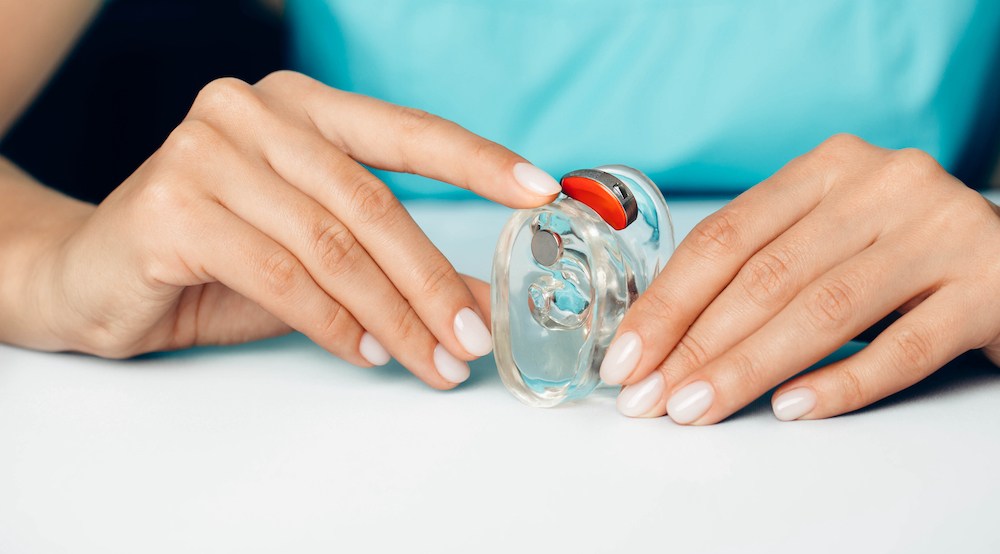Tips for Reducing Ear Fatigue
Ear fatigue is something many people experience, especially in today’s

By: admin | July 29, 2025
Hearing care looks nothing like it did even a decade ago. We’ve gone from those big beige hearing aids that made everything sound tinny to devices that are practically invisible and smart enough to know when you’re in a restaurant or your living room. Testing used to feel like a guessing game, but now we can map your hearing loss with incredible detail and fit you with devices that actually work for how you live your life. It’s pretty amazing how quickly things have changed.
The best part is that getting help with your hearing isn’t nearly as complicated as it used to be. You can have a hearing test and get your results in one quick appointment, adjust your device settings through an app on your phone and even have virtual appointments with your audiologist. We’re heading toward a future where your hearing aids will learn what you prefer in different situations and adjust themselves automatically. The technology keeps getting better and more accessible, which means people can get help sooner.
Technology is progressing how our team supports your hearing needs. Devices are now easier to use and many connect directly to your phone or tablet, making it simple to adjust settings or reach out for help from home.
Remote care has also become more available. Some hearing tests and follow-ups can be done online or through apps, saving you time and making care more convenient. These changes offer easier access to support, more device options and quicker help when needed. However, not everyone feels comfortable with technology and some people still prefer in-person visits. It is helpful to discuss with our team what works best for you.
Hearing devices are now more helpful and comfortable than ever. Many use artificial intelligence to adjust sounds in real time, helping you hear speech clearly even in noisy places.
Devices that connect to your smartphone or tablet allow you to change settings easily. Features like rechargeable batteries and water-resistant designs make daily use simpler. With remote support, our team can help you without needing an office visit, using online tools or apps. Apps for simple hearing checks at home also give you more control over your care between appointments.
Hearing devices are getting smarter each year, thanks to artificial intelligence. AI allows your device to quickly adjust settings as you move from quiet to noisy environments, making speech clearer and reducing background noise. Some devices even learn your listening habits over time and make automatic adjustments. These features can help you follow conversations and feel more at ease in busy places.
AI can also help your hearing aids recognize different sound types, like music, speech or traffic noise and respond in a way that keeps everything balanced and comfortable. By reducing the need for manual changes, these devices give you more freedom to focus on what you’re doing instead of worrying about your settings.
Machine learning is enabling hearing devices to become even more personalized. These smart features learn from your daily listening habits and adjust sound settings just for you. If you spend time in different environments like restaurants or parks, the device can remember these places and make changes automatically. This means clearer speech and less background noise wherever you are.
Over time, your hearing aids build a profile of your listening preferences, helping them respond more naturally to the situations you encounter most often. This reduces the need for constant manual adjustments and lets you move between settings with confidence.
Hearing care continues to evolve with technology that makes daily life easier, and Bluetooth is a big part of that progress. Modern hearing aids with Bluetooth and wireless features can connect directly to smartphones, tablets, TVs and other devices, allowing sound to stream straight to your ears. Whether you’re taking a call, watching a movie or listening to music, these features help you stay connected without needing extra accessories or complicated setups.
Wireless connectivity also means you can adjust your hearing aids through an app, making it easy to change volume or switch listening programs wherever you are. Some systems even allow your audiologist to make remote adjustments, saving you a trip to the office. As technology continues to improve, these features are becoming more common, giving you more control and convenience in how you manage your hearing.
Switching to rechargeable batteries and eco-friendly hearing devices is an effective way to support both your hearing needs and the environment. Rechargeable hearing aids typically come with charging stations or portable cases that make it easy to power them overnight, so they’re ready for a full day of use without the hassle of changing tiny batteries. This reduces the number of disposable batteries that end up in landfills and cuts down on the ongoing cost and effort of buying replacements.
In addition to battery improvements, many manufacturers are now using recycled plastics and other sustainable materials in their designs to help lower environmental impact. Some devices are packaged with less waste or use production methods aimed at reducing their carbon footprint. These changes reflect a growing commitment to making hearing technology that works well without putting extra strain on the environment.
Noisy places like restaurants, crowded events or busy streets can make it difficult to follow conversations, even for people without hearing loss. Many modern hearing aids are equipped with advanced noise reduction features designed to help manage these challenges by lowering background sounds while keeping speech clear. This is often achieved through directional microphones that focus on the sound in front of you, filtering out noise coming from other directions so you can better hear the person you’re talking to.
Digital processing is also important, as the hearing aid analyzes incoming sounds and separates speech from other noise, making real-time adjustments to keep everything sounding natural. Some devices even allow users to choose or customize programs for different environments, so you can easily switch to settings optimized for a restaurant, outdoors or a quiet room. These technologies work together to reduce listening effort, making it less tiring to hold a conversation and helping you stay more connected with the people around you, no matter how noisy your surroundings might be.
Custom earmolds made with 3D printing technology are becoming more common in hearing care. These molds fit the unique shape of your ear for better comfort and improved sound quality. 3D printing allows our team to create earmolds quickly and accurately based on a digital scan of your ear.
This technology means less waiting time for new devices or replacements and a better fit that reduces feedback or discomfort. Custom earmolds are helpful for both adults and children who need specialized support from their hearing devices.
Some new hearing devices can track your health as well as help you hear better. Health tracking is becoming a regular feature in many devices, giving you more information about your well-being.
Certain hearing devices now include sensors that measure steps, monitor physical activity or even check your heart rate. This information helps you keep track of how active you are each day. Some models may also alert you if they notice sudden changes in movement or possible falls, with alerts sent to family members or caregivers for added safety.
Telehealth services are expanding access to professional hearing care, especially for people living in rural or remote areas where in-person visits can be difficult. With telehealth, appointments take place through secure video calls or online platforms, making it possible to consult with an audiologist from home. This approach can cover many needs, like follow-up visits, hearing aid adjustments, counseling about hearing loss or tinnitus and troubleshooting device problems without needing to travel long distances.
Telehealth also makes it easier for family members or caregivers to participate in appointments from different locations, supporting shared decision-making and communication about care plans. For people with mobility challenges or limited transportation options, these services reduce barriers to staying on top of hearing health. While not every procedure can be done remotely, telehealth offers a reliable way to maintain regular contact with your provider and address many aspects of hearing care between in-person visits.
Digital screening tools make it faster and simpler to check for hearing loss. Many can be used on a smartphone, tablet or computer, allowing you to take a quick hearing check at home or in a clinic.
Early detection means getting help sooner if there are changes in your hearing. This gives you and our team more options for support and may lead to better results with treatment or devices. Using digital screening tools saves time and can reduce stress about visiting a clinic just for an initial check.
Recent research shows that hearing health and brain function are closely linked, highlighting the importance of treating hearing loss as part of overall health care. When hearing loss goes untreated, the brain has to work harder to fill in gaps, which can lead to increased mental fatigue and make it harder to focus or remember information. Over time, this extra strain may contribute to changes in brain structure and function, with studies suggesting a connection between untreated hearing loss and a higher risk of cognitive decline or dementia.
Taking care of your hearing may help support memory and thinking skills by reducing this cognitive load and keeping the brain engaged with meaningful sounds and conversations. Some research has found that using hearing aids can slow age-related changes in the brain, helping older adults maintain better cognitive function. Addressing hearing loss can also improve social interactions and reduce feelings of isolation, which are themselves risk factors for cognitive decline.
One way to spot new trends in hearing care is to pay attention to what people around you are using or talking about, whether it is friends, family members or community groups. Audiologists often attend training on the latest services and devices, so asking them specific questions about what is new or popular can lead you to options you might not have considered. Staying curious about updates in clinics or local events can also help you learn about changes in care without having to search too hard.
Taking advantage of these trends often means being willing to try something new and see how it works in your daily life. It can help to keep track of what you like and what is difficult about your current setup so you know what to improve. Working closely with your provider to adjust or fine-tune new options can make them more useful and comfortable. This approach helps you get real benefits from new hearing care tools rather than sticking with something that no longer fits your needs.
All of this progress means hearing care is finally starting to meet people where they actually are. Whether you’re trying to follow conversations in a noisy restaurant, talk on the phone more easily or just hear your favorite show without turning the volume all the way up, today’s tools are built to handle real situations like these. And because hearing technology has become more user-friendly, you don’t need to be especially tech-savvy to benefit from it. What used to feel like a big leap now feels like a natural step toward making everyday life a little clearer and less frustrating.
If you’re starting to notice changes in your hearing or it’s been a while since your last check, it’s a good time to see what’s available. At Albuquerque Hearing and Balance in Albuquerque, NM, we make it easy to explore your options and find hearing care that fits your routine. You can reach us at (505) 750-9569 to schedule a visit or ask questions about what’s possible with today’s hearing solutions.

Ear fatigue is something many people experience, especially in today’s
By: admin | October 20, 2025

Hearing care looks nothing like it did even a decade ago. We’ve gone
By: admin | July 29, 2025

You probably already ask Alexa to play your favorite music, tell Siri to
By: admin | June 20, 2025
